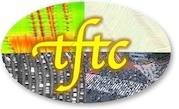Important dates:
Papers will be reviewed upon receiving in the open window (September 4th, 2018 - February 28th, 2019), and a decision for each paper will be made as soon as the review process is complete. Therefore, early submission is encouraged for an early decision. Below are the deadlines for paper submission and reviews.
- Special issue article type becomes available in EVISE: September 4th, 2018
- Submission deadline – February 28th, 2019
- Author notification of first round of reviews – May 31st, 2019
- Author notification of second round of reviews (if needed) – July 31st, 2019
- Special issue completed – September 30th, 2019
TOPICS DESCRIPTION
Introduction
Traffic flow models/theories have been a cornerstone of transportation science and engineering. Many seminal models/theories were developed several decades ago but are still widely used despite the limitations that are well known to the traffic flow theory community. There have been continuous efforts to improve these models, but emerging models/theories are often complex, requiring a large amount of high-resolution data (e.g., trajectory data) for proper validation. Furthermore, human-driven traffic flow is noisy and exhibits large variations particularly at the disaggregate (e.g., vehicle) level, making it challenging to decipher underlying behavior from limited amount of data and determine model validity. Finally, there is lack of systematic and universal criteria for model evaluation, which impedes effective efforts to improve existing models or develop new ones.
On the other hand, significant advances in sensor, sensing, communication, and data processing have resulted in much higher data resolution and quality (e.g., high resolution vehicle trajectories), much larger data volumes, and much more diverse data sources (e.g., probe data from individual vehicles, traffic video, weather, and geometric data). These advances provide enormous opportunities to identify the limitations of the existing models/theories, explore and define the application boundaries of these models/theories, and develop new models/theories to capture the emerging traffic phenomena. Furthermore, with the rise of big data, data-driven approaches could provide new opportunities in understanding traffic flow, as we have seen in many science and engineering fields.
Particularly, connected and automated vehicles have already emerged on our roads, which are expected to cause significant disruption and changes to the fundamental traffic flow characteristics. These changes will likely evolve rapidly due to the fast development of the related technologies. On the other hand, these new technologies will also produce unprecedented amounts of data, thereby presenting challenges as well as opportunities in the new era of traffic flow. It remains to be seen whether the existing models/theories will be able to capture new traffic flow characteristics; if new models are needed; how to harness big data and leverage data analytics (such as data-driven modeling) to advance our understanding of the traffic flow; and how the model development can keep up with the technology development. Therefore, it is very important that we start to investigate the research needs, utilize the new data, and develop new methods to understand the traffic flow and thereby support future traffic management/policy making.
Scope of the special issue:
To address these challenges, this special issue is interested in the following topics:
- Identifying the limitations of the current models and proposing improvements;
- Conducting data analysis at all scales from microscopic vehicle behavior to the network (MFD-NFD based models);
- Comparing physics-based and data-driven approaches for traffic modeling;
- Extending models beyond their current main scope: from vehicular traffic to encompass other modes and new types of vehicles (e.g., pedestrians and cyclists);
- Exploring model applicability for traffic in different contexts (e.g., work zones, incidents, different geometric conditions, and different weather); and
- Developing new models/theories for connected and automated vehicles;
- Other relevant topics.
Submission method:
Guidelines for manuscript submission can be referred to https://www.evise.com/evise/jrnl/TRC .
When submitting your manuscript, please choose “VSI: Traffic flow modeling” for “Article Type”. This is to ensure that your submission will be considered for this Special Issue instead of being handled as a regular paper.
Guest Editors:
Soyoung Ahn, Associate Professor
Department of Civil and Environmental Engineering
University of Wisconsin, Madison
Email: sue.ahn@wisc.edu
Christine Buisson
Université de Lyon, ENTPE-INRETS, Laboratoire d’Ingénierie Circulation Transports LICIT
Email: christine.buisson@entpe.fr
Danjue Chen
Department of Civil and Environmental Engineering
University of Massachusetts Lowell
Email: danjue_chen@uml.edu


